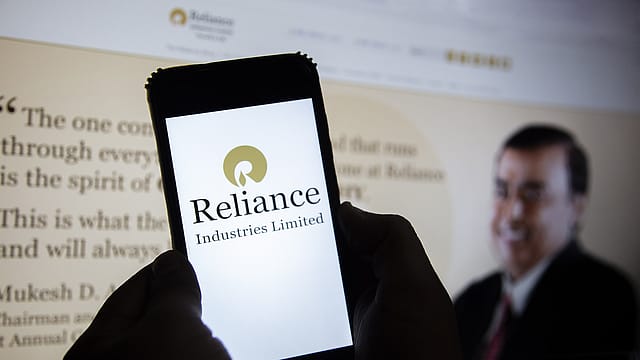RIL shares down 15% in 2 months but analyst sees up to 28% upside potential; here’s why
ADVERTISEMENT

After declining 15% in the past two months, Reliance Industries (RIL) saw some buying this week, with the country’s most valued stock rising over 4% in the last three sessions amid value buying. According to analyst at JM Financial, RIL shares are trading near its “bear-case” valuation and has an upside potential of 28.5% from the current level, amid hopes of recovery in Q3 earnings, led by a recovery in gross refining margin (GRM), lagged impact of tariff hike and some recovery in retail business growth driven by the festive season.
The brokerage firm has retained 'Buy' rating on the stock with a revised 12-month target price of ₹1,660 per share from ₹1,735 earlier, amid conservative value of JioMart at ‘NIL’ (vs. earlier value of ₹79/share) due to potential impact of quick commerce on the opportunity to digitise kirana stores.
“Clarity on the potential timeline and valuation for Jio’s listing could be a possible near to medium term trigger,” says JM Financial in a report.
The report notes that the listing of Jio and retail businesses over the next few years could lead to a potential re-rating. “At current market price, the stock is trading at FY27E P/E of 16.6x (3-yr avg: 24.9x) and FY27E EV/EBITDA of 8.5x (3-yr avg: 12.8x).”
January 2026
Netflix, which has been in India for a decade, has successfully struck a balance between high-class premium content and pricing that attracts a range of customers. Find out how the U.S. streaming giant evolved in India, plus an exclusive interview with CEO Ted Sarandos. Also read about the Best Investments for 2026, and how rising growth and easing inflation will come in handy for finance minister Nirmala Sitharaman as she prepares Budget 2026.
According to the domestic brokerage house, the recent weakness in RIL’s shares were primarily due to 5-6% downgrade in consensus FY25 EBITDA estimate driven by weak oil-to-chemical (O2C) and retail business earnings in H1 FY25; and limited clarity on telecom subsidiary’s Jio listing timeline. The sentiment was further dented by accelerated stake sale by foreign institutional investors (FIIs), declining to 22.5% as of end-Oct'24, from the peak of 28.3% in Mar'21. However, domestic institutional investors’ (DIIs) shareholding in RIL has risen to 17.9% as of end-Oct'24, from the last 4-year low of 12.3% in Mar'21. FII’s stake has decreased by 112bps in Oct'24 as against 62bps rise in DII’s ownership in the company during the same period.
The brokerage expects RIL’s net debt to decline gradually as capex will not only moderate (₹1.2-1.4 lakh crore per annum versus ₹2.3 lakh crore in FY23 and ₹1.3 lakh crore in FY24) but also be fully funded by a gradual increase in internal cash generation. It also believes that the telecom-to-oil conglomerate could still drive a robust 14-15% earnings per share (EPS) CAGR over the next 3-5 years with Jio’s average revenue per user (ARPU) expected to rise at 11% CAGR over FY24-28.
The agency expects structural growth in ARPU to be driven via a mix of tariff hikes; mobile broadband (MBB) network upgrade to 4G/5G; strong post-paid additions; and data monetisation driven by continued rise in data usage. Despite the recent tariff hikes and highest data usage, ARPU in India is one of the world’s lowest at $2.4 per month versus the global average of $8-10/month (and $7.1/month in China and +$20/month in developed countries). India’s ARPU to GDP per capita is still low at around 1% in FY24 vs. +1.5% before FY15 (i.e., before Jio’s entry), though it has recovered from a low of 0.7% in FY19. This is because both nominal- and inflation-adjusted ARPUs are still lower than historical ARPUs despite the recent increase.
Going ahead, key risks for billionaire Mukesh Ambani-led company is continued high capex, resulting in rising net debt with limited earnings visibility from new projects. Adding to it, weak subscriber addition and limited ARPU hike; continued muted growth in retail business; and subdued O2C margins due to macro concerns.
(DISCLAIMER: The views and opinions expressed by investment experts on fortuneindia.com are either their own or of their organisations, but not necessarily that of fortuneindia.com and its editorial team. Readers are advised to consult certified experts before taking investment decisions.)
